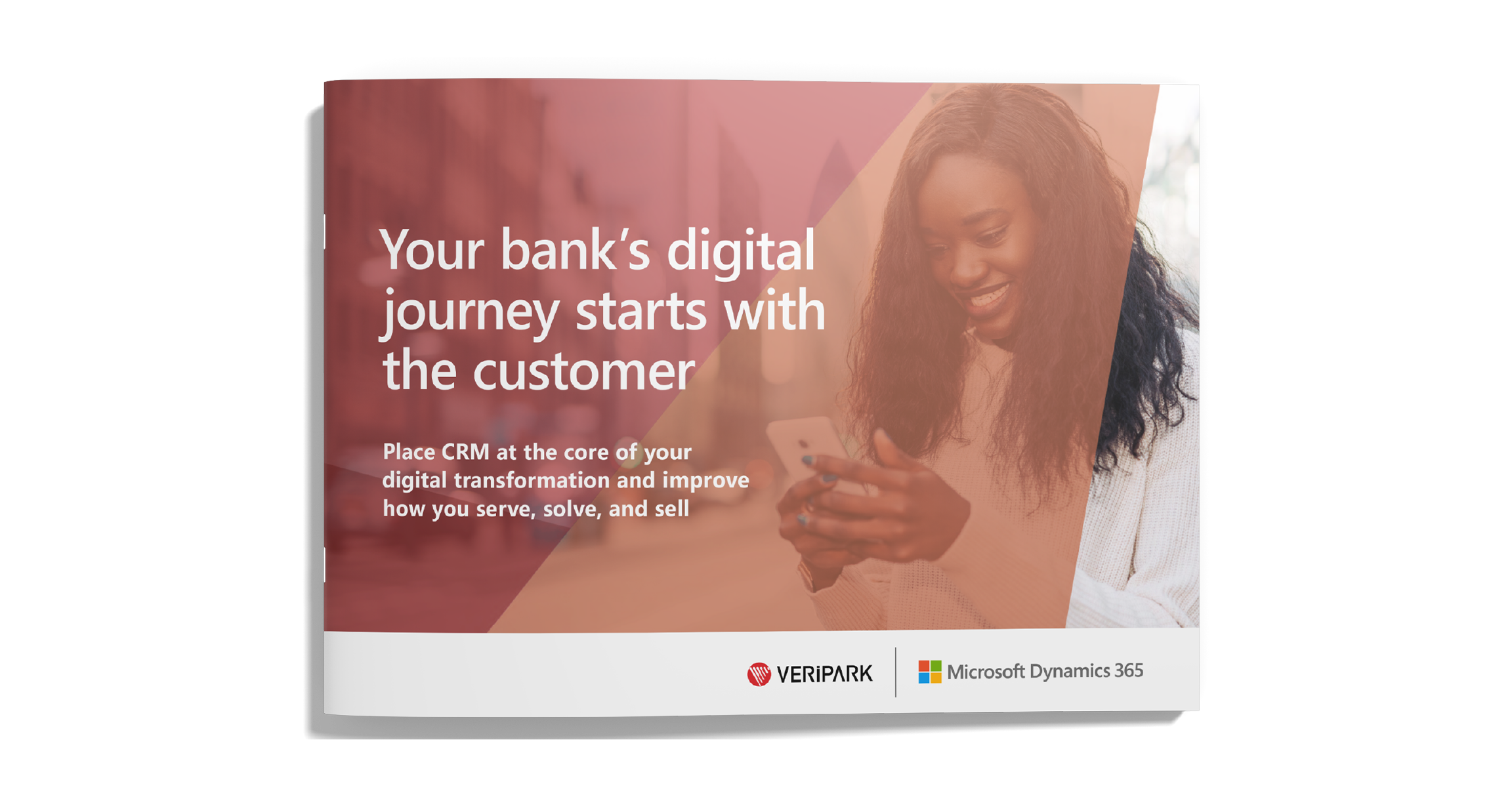
Moving from transactional banking services to customer-centric experiences
Most banks don't tend to think about being timely and engaging because they have been built on product or function silos with each department executing its part of the transaction. Typically, customers get in touch with their bank through their preferred channel, make a specific transaction - and then leave. But this transaction-based banking model is changing fast.
How can CRM help banks to differentiate?
With the right CRM solution, banks can become more customer centric. When someone makes a transaction on his/her mobile app for instance, the CRM system could check if there is a relevant next best action for this individual customer.
Let's say Emma is using Personal Financial Management (PFM) and sets a goal to save for a special holiday. When she credits her designated savings account, an effective CRM system could automatically send her an offer for a travel insurance or discounts from relevant third-party brands. Crucially, the CRM system shares this transaction information across the bank, with online banking, call center and branch teams. This way, everyone in the bank becomes aware of Emma's target and can help her to reach her goal as quickly as possible.
It's almost impossible for branch staff to build meaningful relationships when they are unaware of customer transactions on other banking channels. But with a single view of the customer they can transform their transaction-based services to customer centric experiences. As well as improving customer satisfaction this also creates cross-selling opportunities, such as Emma's insurance offer.
Single view of the customer also means all channels in the bank can see Emma's current situation and full transaction history. If Emma decides to call an agent at the customer service center, she doesn't need to repeat her story. Instead, she enjoys a seamless and engaging customer journey.
Banking on CRM to transform processing efficiency
At VeriPark, we put CRM at the center of our banking clients' digital transformation plans. This enables banks to provide uninterrupted connected journeys across all channels with a single CRM system that becomes the central repository for all customer data and transaction histories. This CRM unified front end is available to all teams across all channels.
This is a highly efficient way of working. It allows for faster turnaround times as well as reduced error rates with less data inputting replication. It also improves customer service, as even complex Non-Straight Through Processing (Non-STP) enquiries can be handled more quickly.
Customers love the convenience, personalization and speedy resolution of such enquiries. For example, Emma may want to book an appointment with a Relationship Manager or make an international money transfer. Often, these enquiries are placed in a queue or there's a lengthy approval process.
With a CRM solution, banks can manage these Non-STP processes much faster. And ensure they add value by offering the right services to the right customer at the right time. For example, if a customer has recently made a complaint, all call center and branch teams will be aware of the issue and know that this is not an appropriate time to attempt to cross sell to the customer.
Meeting ever more demanding customer expectations is a big challenge for banks in a digital world. You can't just have great products. A CRM solution is critical to your success because it gives you the in-depth customer knowledge that enables efficient services and tailored offers.





